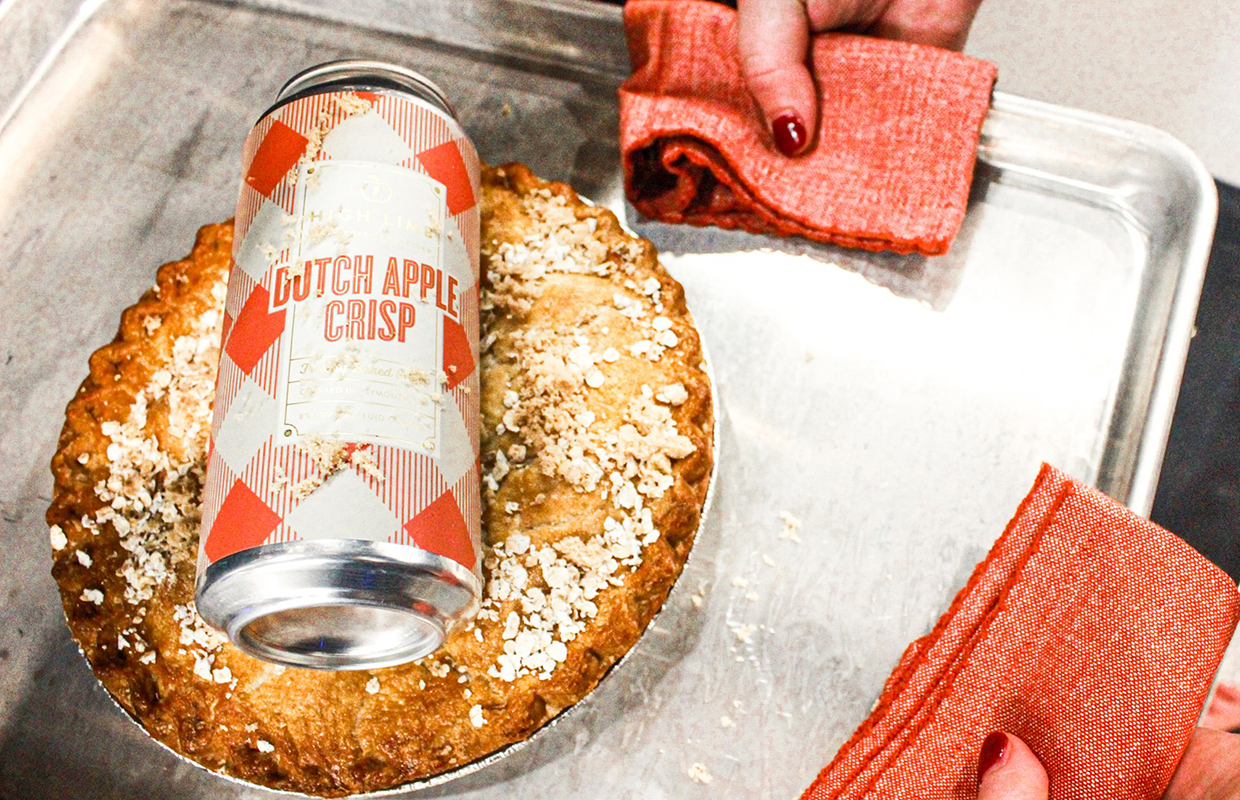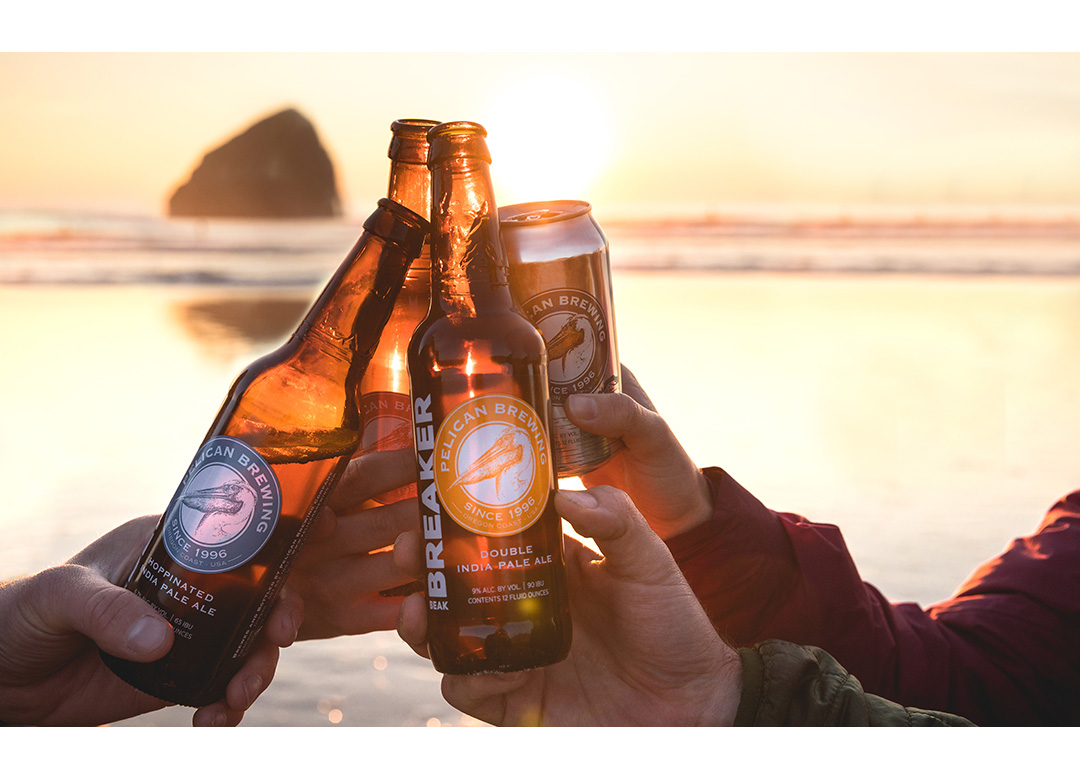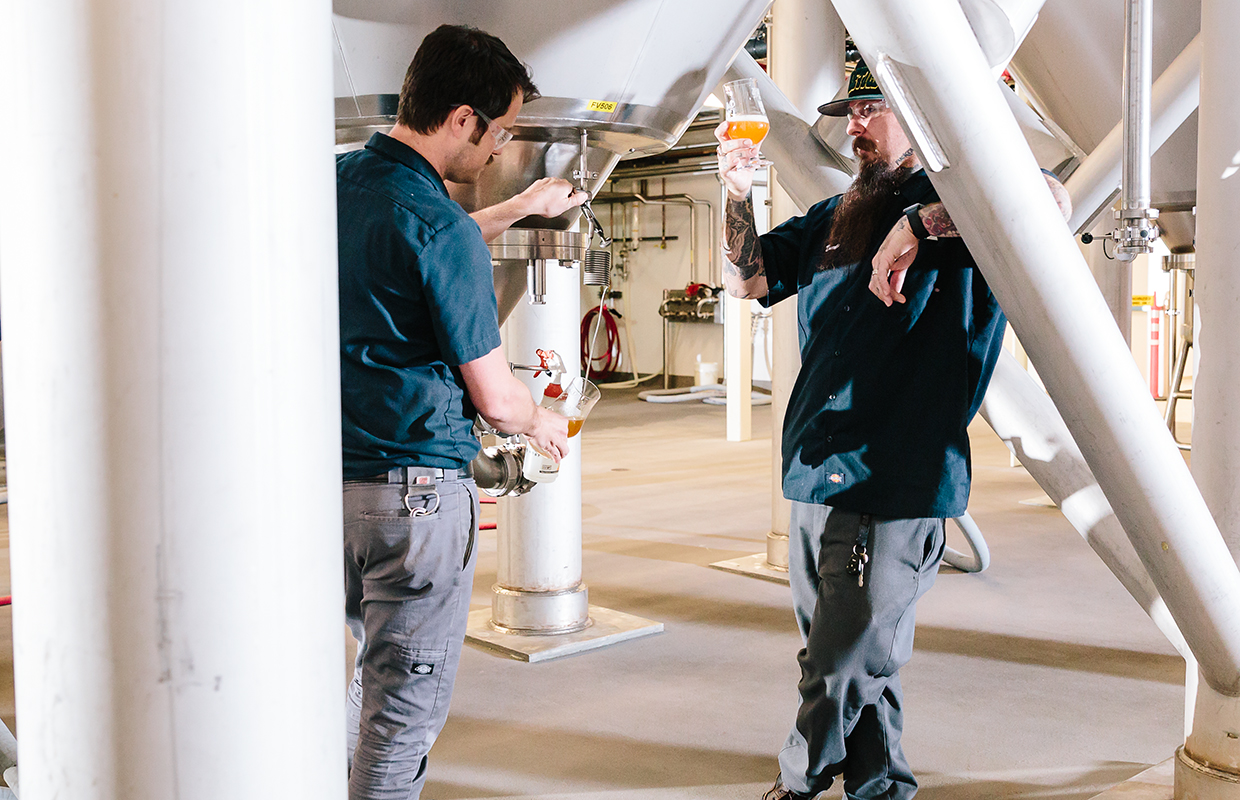
It can be a fresh fruit blend for each season; a classic single apple varietal; or a well-aged barrel ready to be tapped. All types of brands your cidery produces need to be thought of in a perspective of where it will be sold and how it will be packaged.
And for many cideries, there is no “magic number” when it comes to determining if distribution is the right avenue to follow or to keep it in-house and serve either on tap or for sales to-go.
Yet, that planning should take place beforehand to make sure you are setting the brand up for success.
“It’s often a gut feel that we get from our retail customers along with insights from our own employees and distributors,” explained Stem Ciders‘ Dave Duffy. The Colorado cidery’s CCO said that there isn’t a highly developed plan to determine such things, “nor do we want it to be.”
Communication and early planning can help mature a new brand or an existing seasonal. For instance, High Limb Cider shared with Brewer that it releases brands to its distributors by creating a buzz with them and retailers up to six months before a release.
“There is no magic number,” they said in regards to knowing when a brand is ready to move from a tasting room scenario into production.
READ MORE: Cider Corner: 3 Things to Ponder While Choosing a Distributor
Obviously, some ways to determine this, along with your gut instincts is to see how the brand is performing in sales; if it fits a hole in your brand’s distro portfolio; the thoughts of your wholesaler; and even getting opinions from retailers. But don’t forget that some of these may be skewed from a “fan perspective” and you need outside influence to help determine a general market’s thought process as well.
A cidery can start planning its portfolio for seasonal ciders well in advance of when they are produced, sometimes up to a year or even more in advance.
Chris Denkers of Coyote Hole said freshness is a factor and planning is key to make sure that they can get the type of apples or fruit in the quantity they need and when they need them.
”We usually decide on the different new and previously made ciders about a year in advance to fit into our schedule for events as we usually release our seasonal ciders with specific events placed around them,” he said.
They choose to make a wide variety of seasonal ciders and what needs to happen in their eyes to become a year-round cider or one that they continue to make year after year is its popularity.
”If it doesn’t sell, we tweak the recipe or replace it with a new seasonal next year,” Denkers said. ”If it sells great and we get a great response from our patrons, we look into the feasibility of either being able to make larger batches to last longer the following year or if we can start putting it into production year-round.”
As the Virginia cidery continues to grow their tasting room — and most importantly, distribution — planning, and logistics are key. Coyote Hole outsources some production tasks like filtering and canning to local businesses and as the production grows and becomes more and more frequent, laying out a plan and making a schedule with all of their suppliers is key.
Photo courtesy High Limb Cider




Be the first to comment